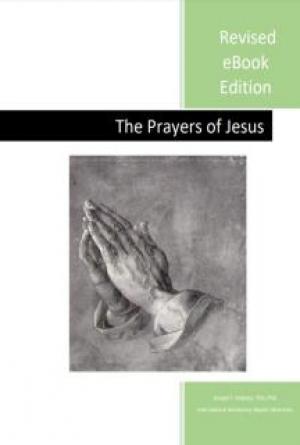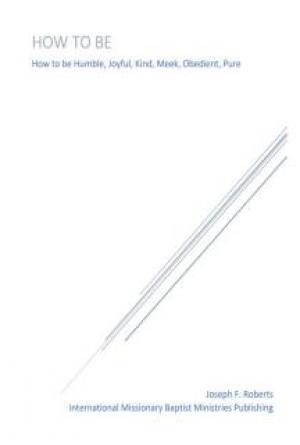Second, circumcision
was a sign of the death of the flesh by its being cut off and put away
(buried). Baptism is also a sign of the death of our “old man” or “body
of sin” of the flesh which has been destroyed (cut or put off, buried) by this spiritual
circumcision made without hands. (Col. 2:11,12)
3 Or
do you not know that as many of us as were baptized into Christ Jesus were
baptized into His death? 4 Therefore we were buried with Him
through baptism into death, that just as Christ was raised from the dead by the
glory of the Father, even so we also should walk in newness of life. 5 For
if we have been united together in the likeness of His death, certainly we also
shall be in the likeness of His resurrection, 6 knowing this,
that our old man was crucified with Him, that the body of sin might be done
away with, that we should no longer be slaves of sin. (Rom. 6:3-6)
Both
circumcision and baptism are performed once.
Both point toward faith in Christ and regeneration of the Holy Spirit,
the “washing of regeneration.” (Titus 3:5)
The
Sign of the Covenant Must Be Applied Consistently
If
God allowed for circumcision to be applied to the infants of believing Jews as
the sign of the covenant prior to the faith of the child, why would He not likewise
do the same for the infant children of believing Christians? They also are part of the covenant family of
God or seed of Abraham through the “servant to the circumcision,” Jesus Christ.
8 Now
I say that Jesus Christ has become a servant to the circumcision for the truth
of God, to confirm the promises made to the fathers, (Rom. 15:8)
Many
have erred by maintaining that the thing signified (faith) should always
precede the sign (baptism). In the
Bible, the sign is often given first and then the significance happens
later. For example, circumcision and the
signs and patterns of the Old Testament pointed to baptism and the later work
of Christ.
But
Shouldn’t Faith Come First?
While
it is true that specific individuals mentioned in the New Testament were said
to have been baptized after their repentance and faith, one must realize these
converts were first generation believers. When Christianity
started, it was necessary to be a believer first before being baptized for the Gospel
to spread. The exact same thing was true
of Judaism. Abraham and his family were
first generation Jews and as adults had to believe before receiving the sign of
the covenant. However, the sign of the covenant
was commanded by God to be applied to their infants in all succeeding
generations after the first generation.
This would be in keeping with the Great Commission of Matt. 28:19 which commands
we should teach and then baptize. We
teach the first generation to become part of the covenant family of God through
their faith and baptize them and their infants in all succeeding generations.
This keeps a harmony or consistency with the Old and New Testament.
Therefore,
there are two ways to be admitted into the covenant family of God.
First,
if one was not born into the family of believing parents but was capable of
believing then that person must enter it by faith just like the first
generation Jew and Christian. That person then would receive the sign of the
covenant, circumcision to the Jew in the Old Testament and baptism to the
Christian in the New Testament.
Second,
if one was born into the believing family of God, then on the basis of being of
the seed or children of Abraham and heirs to the promises of the covenant, the
child received the sign of the covenant, circumcision in the Old Testament and
baptism in the New Testament. This would be done shortly after birth so the
child would be dedicated and consecrated to the Lord.
The
sign pointed toward the time God would regenerate and bring the child to
faith. Neither being born into the
covenant family nor receiving the sign saved the individual. Just as some were circumcised but did not
come to saving faith, so too are some baptized but do not come to faith in
Christ. In both cases, the child became
righteous by his faith to come. The sign
was just a picture of the future regeneration of cleansing and death to sinful
flesh. This was true of both circumcision
and baptism.
Just
as the infant had no faith before circumcision, but was circumcised due to the
faith of the Jewish parents, so too are the infants of believing Christian
parents baptized before their faith on the basis of the faith of the parents
within the covenant family. In a very
real sense, the baptism of the infant does follow faith, the faith of the
believing parent or parents.
Isn’t
Infant Baptism Strange?
If
there is no absurdity in the command to circumcise infants, then there is no
absurdity in the baptizing of infants of believing parents. Nowhere in Scripture does it say that those
being baptized must examine themselves first as is the case when partaking of the
Lord’s Supper. Therefore, an infant
would not be excluded from baptism as the child would from the Lord’s
Supper. If God commanded that infants in
the Old Testament be circumcised before their hearts were circumcised
(regeneration), why wouldn’t infants of the family of God of believing parents
in the New Testament receive baptism before their spiritual baptism
(regeneration)? The following verses
show us circumcision of the heart (regeneration):
16 Therefore
circumcise the foreskin of your heart, and be stiff-necked no longer. (Dt.
10:16)
6 And
the Lord your God will circumcise
your heart and the heart of your descendants, to love the Lord your God with all your heart and
with all your soul, that you may live. (Dt. 30:6)
Circumcise
yourselves to the Lord,
And take away the foreskins of your hearts, (Jer. 4:4)
Circumcision
and Baptism – Signs of Repentance and Faith
Many
say that baptism is a sign of repentance and faith and therefore should not be
given to infants. However, circumcision
was also a sign of repentance or change of heart. (Dt. 10:16, 30:6; Jer. 4:4) It was also a sign of faith.
11 And
he received the sign of circumcision, a seal of the righteousness of the faith
which he had while still uncircumcised, that he might be the father of all
those who believe, though they are uncircumcised, that righteousness might be
imputed to them also, (Rom. 4:11)
Therefore,
if circumcision, a sign of repentance and faith (regeneration of the heart),
was given to the infant child before his faith, why would not baptism (washing
of regeneration) also be given to infants of Christians? The repentance and
faith regarding circumcision was referring to the faith of the believing
parents and then later to the child at conversion or regeneration. The same is true of baptism.
In
the New Testament, we see that the children of believers (one or both) are
considered “holy” by God.
14 For
the unbelieving husband is sanctified by the wife, and the unbelieving wife is
sanctified by the husband; otherwise your children would be unclean, but now
they are holy. (1 Cor. 7:14)
Abraham’s
seed in the Old Testament were also called a “holy” seed.
2 For
they have taken some of their daughters as wives for themselves and their sons,
so that the holy seed is mixed with the peoples of those lands. (Erza 9:2)
But yet
a tenth will be in it, And will return and be for consuming,
As a terebinth tree or as an oak, Whose stump remains when it is cut down. So
the holy seed shall be its stump.” (Isa. 6:13)
Here we
see a direct connection with the Old and New Testament children of the
covenant. Both are sanctified by their
believing parents. Why then would God give circumcision to the Jewish infant,
yet withhold baptism from the Christian infant?
Baptism
Has Replaced Circumcision As The Sign of the Covenant
Since
the Abrahamic covenant was an everlasting covenant, it is still in effect. Circumcision was the sign of this covenant in
the Old Testament. Therefore, what is
the New Testament sign of this everlasting covenant? It is evident that baptism has replaced circumcision
as the sign of God’s everlasting covenant of the seed of Abraham or Christians
of the New Testament. In the Great
Commission (Matt. 28:19) we are commanded to baptize, not to circumcise.
When
we are baptized spiritually, we are also circumcised spiritually “with the
circumcision made without hands.” They mean one and the same thing.
11 In Him
you were also circumcised with the circumcision made without hands, by putting
off the body of the sins of the flesh, by the circumcision of Christ, 12 buried
with Him in baptism, in which you also were raised with Him through faith in
the working of God, who raised Him from the dead. (Col. 2:11,12)
Therefore,
we are fulfilling the Abrahamic condition of circumcision (Gen. 17:10) by
baptizing the infant. Further evidence that baptism has replaced and is
superior to circumcision is that in baptism both Gentiles and females can
receive the sign of the covenant.
28 There
is neither Jew nor Greek, there is neither slave nor free, there is neither
male nor female; for you are all one in Christ Jesus. 29 And if
you are Christ’s, then you are Abraham’s seed, and heirs according to the
promise. (Gal. 3:28,29)
Circumcision
was a mark that symbolized that the Jew was one of God’s people. Baptism also shows this. The sign is given to the infant of believing
parents as a seal of the baby’s son-ship to God and of His grace to the
child.
Old
Testament Household Baptism and Blessings
God
has made abundant provision for the salvation of the household on the same
basis of faith as he has for the individual. There are many cases in Scripture
where the faith of one (the parent) was the basis of God’s blessing on another
(the child).
In
the Old Testament, the Lord commanded Noah and his household to get into the
ark.
7 Then
the Lord
said to Noah, “Come into the ark, you and all your household, because I have
seen that you are righteous before Me in this generation. (Gen. 7:1)
We
see also in Scripture that the ark was a figure of baptism.
when
once the Divine longsuffering waited in the days of Noah, while the ark was
being prepared, in which a few, that is, eight souls, were saved through water.
21 There is also an antitype which now saves us—baptism (not
the removal of the filth of the flesh, but the answer of a good conscience
toward God), (1 Pet 3:20,21)
Noah’s
entire household was saved from the flood as a result of the faith of Noah as
the parent.
God told
Moses and Aaron for the first Passover for God’s people to take a lamb and
sacrifice it and place its blood on the doorposts to save those of the
household from death by the Lord as He passed over that house.
3 Speak
to all the congregation of Israel, saying: ‘On the tenth of this month every
man shall take for himself a lamb, according to the house of his father, a lamb
for a household. (Ex. 12:3)
7 And
they shall take some of the blood and put it on the two doorposts and on the
lintel of the houses where they eat it. (Ex. 12:7)
Here,
the entire family of the household, infants and those older, received the
blessing of the passing over of the Lord on the basis of the faith of the
believing parents who had to apply the blood on the door posts.
Joshua
believed that the promises of God included all the members of his household. It
was by his faith that led his family to serve the Lord.
But
as for me and my house, we will serve the Lord.”
(Joshua 24:15)
New
Testament Household Baptisms and Blessings
When
God told Cornelius to send for Peter, it was for the purpose that he and his
household might be saved
Send
men to Joppa, and call for Simon whose surname is Peter, 14 who
will tell you words by which you and all your household will be saved. (Acts 11:14)
Lydia
was baptized after believing and then her household was baptized.
14 Now
a certain woman named Lydia heard us. She was a seller of purple from the city
of Thyatira, who worshiped God. The Lord opened her heart to heed the things
spoken by Paul. 15 And when she and her household were
baptized, (Acts 16:14,15)
Paul
and Silas told the Philippian jailer to believe and that he and his household
would be saved.
31 So
they said, “Believe on the Lord Jesus Christ, and you will be saved, you and
your household.” (Acts 16:31)
The
Philippian jailer, after believing, was immediately baptized along with all his
family or household.
And
immediately he and all his family were baptized. (Acts 16:33)
Of
all the household baptisms mentioned in the New Testament, it would seem
unlikely that not one infant was present.
If even one was present, then he or she certainly was baptized as part
of the household.
Cases
When the Faith of One Was the Basis for the Blessing of Another
Jesus
forgave the sins of the one sick of the palsy on the basis of the faith of his
friends.
So
when they had broken through, they let down the bed on which the paralytic was
lying. 5 When Jesus saw their faith, He said to the paralytic,
“Son, your sins are forgiven you.” (Mark 2:4,5)
The
servant of the centurion was healed long distance because of the faith of his
master.
13 Then
Jesus said to the centurion, “Go your way; and as you have believed, so let it
be done for you.” And his servant was healed that same hour. (Matt. 8:13)
This
often involved the faith of the parent with a corresponding blessing to the
child. Such was the case when Jesus raised
from the dead the daughter of Jairus on the basis of his faith.
22 And
behold, one of the rulers of the synagogue came, Jairus by name. And when he
saw Him, he fell at His feet 23 and begged Him earnestly,
saying, “My little daughter lies at the point of death. Come and lay Your hands
on her, that she may be healed, and she will live.” 24 So Jesus
went with him, and a great multitude followed Him and thronged Him. (Mark
5:22-24)
41 Then
He took the child by the hand, and said to her, “Talitha,
cumi,” which is translated, “Little
girl, I say to you, arise.” 42 Immediately
the girl arose and walked, for she was twelve years of age. And they were
overcome with great amazement. (Mark 5:41-42)
The
nobleman’s son was healed strictly on the basis of the father’s faith.
49 The
nobleman said to Him, “Sir, come down before my child dies!” 50 Jesus
said to him, “Go your way; your son lives.” So the man believed the word that
Jesus spoke to him, and he went his way. 51 And as he was now
going down, his servants met him and told him, saying, “Your son lives!” (John 4:49-51)
52 Then
he inquired of them the hour when he got better. And they said to him,
“Yesterday at the seventh hour the fever left him.” 53 So the
father knew that it was at the same hour in which Jesus said to him, “Your son
lives.” And he himself believed, and his whole household. (John 4:52,53)
Therefore,
if miracles were performed on a child because of the faith of the
parent, doesn’t it seem reasonable that God would bless the faith of Christian
parents when they bring their infant children of their household for
baptism? This blessing would certainly
seem in order and proper as parents brought to Christ their “little children”
for Him to hold. Jesus blessed the
little ones.
13 Then
they brought little children to Him, that He might touch them; but the disciples
rebuked those who brought them. 14 But when Jesus saw it, He
was greatly displeased and said to them, “Let the little children come to Me,
and do not forbid them; for of such is the kingdom of God. 15 Assuredly,
I say to you, whoever does not receive the kingdom of God as a little child
will by no means enter it.” 16 And He took them up in His arms,
laid His hands on them, and blessed them. (Mark 10:13-16)
Shouldn’t
we also bring our little children to receive the blessing of baptism? On the basis of our faith, would He not
likewise bless our infant children in like manner?
Benefits
of Infant Baptism
The
infant baptism is a dedication or consecration of both the child and the
parents.
The
benefits of infant baptism are three-fold.
First, it instills parental responsibility in the spiritual upbringing
of the child. Second, it instills congregational responsibilities in the
child’s spiritual development. Third,
although baptism does not take away sin or save the child, it imparts a
spiritual blessing or benefit.
Circumcision of the Old Testament profited the Jewish infant.
3 What
advantage then has the Jew, or what is the profit of circumcision? 2 Much
in every way! Chiefly because to them were committed the oracles of God. (Rom.
3:1,2)
Since
circumcision profited the Jewish infant, then baptism most certainly profits
the infant born of Christian parents.
Through
the study of the covenant of grace, we see how the promises, benefits, and
advantages of the Jewish family were to apply also to the Christian family. We also see the harmony that exists between
the Old and New Testament. There is one
church or family of God. Circumcision
and baptism stand for the same spiritual realities but baptism is superior and
has replaced c







